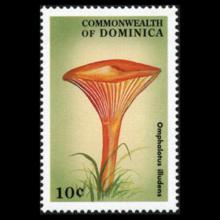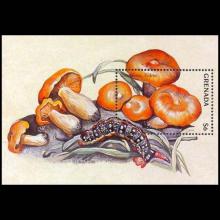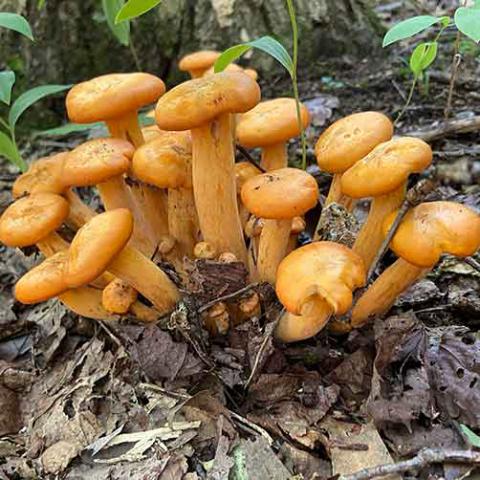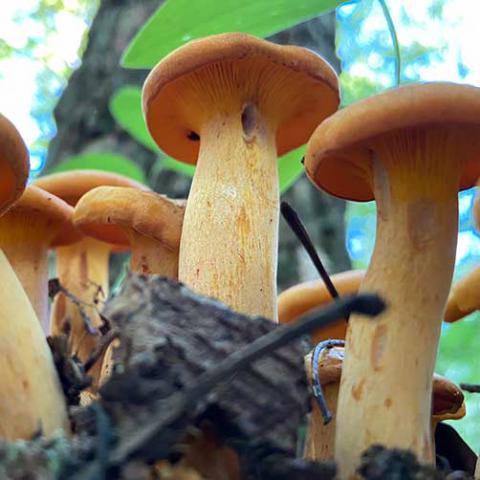NAMES
TAXONOMY
FUNGI ID
THERAPEUTIC
Dominica
Issued:
Stamp:
Omphalotus illudens
Grenada
Issued:
Stamp:
Omphalotus illudens
Dominica
Issued:
Stamp:
Omphalotus illudens
Grenada
Issued:
Stamp:
Omphalotus illudens
Dominica
Issued:
Stamp:
Omphalotus illudens
Grenada
Issued:
Stamp:
Omphalotus illudens
Description from the video (shown above)
A common late summer and fall mushroom, Omphalotus illudens has a rather uncommon trait that earns it the nickname: the Jack O'Lantern mushroom-- when viewed in the dark, the mushroom's orange gills emit an eerie bio-luminescent green glow.
Exposures are 30-90 seconds at 1000 ISO, f/1.6 and greatly enhance the perceived luminosity, which appeared far fainter to the eye.
Genus species (Fungi): Omphalotus illudens
Omphalotus illudens is commonly called the eastern jack-o'lantern mushroom. It is a large orange mushroom that is often found in clumps on decaying stumps, buried roots or at the base of hardwood trees in eastern North America. Nearly all field guides claim its gills often exhibit a weak green bioluminescence when fresh; however, some dispute this entirely as a myth. On the other hand, the green glow, also known as bioluminescence, has been mentioned in several journals, stating that the glow can last up to 40-50 hours after the mushroom has been picked, and that the reason for the green glow is for the fungus to attract insects during the night in order for the insects to distribute the spores throughout the area.
Omphalotus illudens is sometimes confused with edible chanterelles, but is poisonous to humans when eaten, whether raw or cooked, and typically causes vomiting, cramps, and diarrhea. Although some older literature claims the name is synonymous with Omphalotus olearius, phylogenetic analysis confirms they are distinct species.
Toxicity
The poisonous chemical compounds illudin S and illudin M were isolated from Omphalotus illudens. In addition to their antibacterial and antifungal effects, illudins appear to be the cause of human toxicity when these mushrooms are eaten raw or cooked. Muscarine has also been indirectly implicated in toxicity, but modern studies to demonstrate its presence in O. illudens are needed.
The cytotoxic effect of illudin is of interest for treating some cancers, but illudin itself is too poisonous to use directly so it must first be chemically modified. Inside human cells, illudin S reacts with DNA and creates a type of DNA damage that blocks transcription. This block can only be relieved by a repair system called nucleotide excision repair. Damage in non-transcribed DNA areas is left unrepaired by the cell. This property was exploited by the company MGI Pharma to develop an illudin-derivative called Irofulven for use as a cancer treatment. Its application is still in the experimental phase.
Reference: Wikipedia
Photos: Peter Needle





